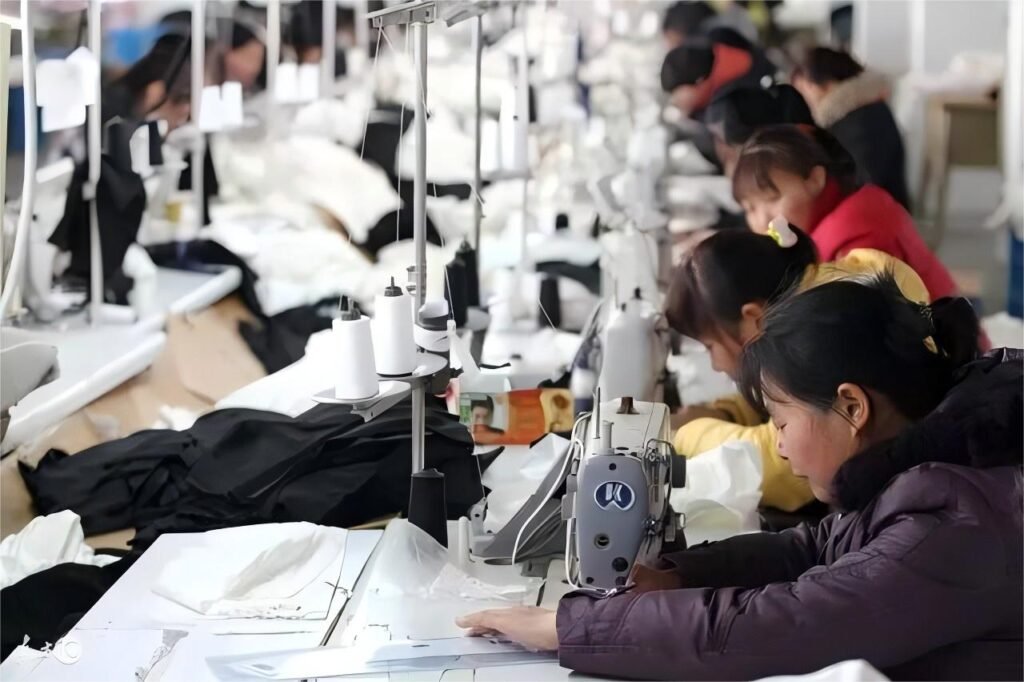No products in the cart.
Custom Yoga Pants
Clothing Bulk Orders: Affordable Solutions for Large Quantities
Introduction: Clothing Bulk Orders and their Benefits
Clothing bulk orders have become increasingly popular in the fashion industry, offering affordable solutions for businesses and individuals looking to purchase large quantities of clothing items. Whether you are a retailer, a fashion brand, or an organization in need of uniforms, bulk orders can provide numerous benefits. In this article, we will explore the concept of clothing bulk orders, their advantages, factors to consider before placing an order, finding reliable suppliers, negotiating prices and discounts, customization options, managing logistics and delivery, quality control measures, handling returns and exchanges, and provide case studies of successful bulk orders.

Understanding the Concept of Bulk Orders
A bulk order refers to purchasing a large quantity of products from a supplier or manufacturer. In the context of clothing, it means buying a significant number of garments in one transaction. The exact quantity required to qualify as a bulk order may vary depending on the supplier, but it typically involves purchasing hundreds or even thousands of pieces.
Advantages of Clothing Bulk Orders
There are several advantages to opting for clothing bulk orders. Firstly, bulk orders often come with significant cost savings. Suppliers are more likely to offer discounted prices for large quantities, allowing businesses to maximize their profit margins. Additionally, bulk orders reduce the per-unit cost of each item, making it more affordable for retailers to sell at competitive prices.
Another benefit of bulk orders is the convenience they offer. Instead of having to place multiple smaller orders, businesses can streamline their purchasing process by ordering in bulk. This saves time and effort, allowing retailers to focus on other aspects of their business.
Furthermore, bulk orders provide consistency in terms of product availability. By ordering a large quantity of clothing items, businesses can ensure that they have enough stock to meet customer demand. This is particularly important for retailers who experience high sales volumes or for organizations that require uniforms for their employees.
Factors to Consider Before Placing a Bulk Order
Before placing a bulk order, there are several factors that businesses should consider. Firstly, it is essential to assess the demand for the clothing items. Conducting market research and analyzing sales data can help determine whether there is sufficient demand to justify a bulk order.
Additionally, businesses should carefully consider the storage space required for bulk orders. Large quantities of clothing items can take up a significant amount of space, so it is crucial to ensure that there is adequate storage available.
Furthermore, it is important to evaluate the financial implications of a bulk order. While bulk orders can offer cost savings, businesses need to assess whether they have the necessary funds to make the upfront payment required for such orders.
Finding Reliable Suppliers for Clothing Bulk Orders
Finding reliable suppliers for clothing bulk orders is crucial to ensure a smooth and successful transaction. One way to find suppliers is through trade shows and industry events, where businesses can connect with manufacturers and wholesalers. Online directories and platforms specifically designed for bulk orders, such as Alibaba and Global Sources, can also be valuable resources.
When evaluating potential suppliers, it is important to consider their reputation, experience, and track record. Reading customer reviews and testimonials can provide insights into the supplier’s reliability and the quality of their products. Additionally, requesting samples before placing a bulk order can help assess the supplier’s product quality and suitability.
Negotiating Prices and Discounts for Bulk Orders
Negotiating prices and discounts is a crucial step in the bulk ordering process. Suppliers are often willing to offer discounts for large quantities, but it is essential for businesses to negotiate effectively to secure the best possible deal.
One strategy for negotiating prices is to gather quotes from multiple suppliers and use them as leverage. By demonstrating that there are other options available, businesses can encourage suppliers to offer more competitive prices. Additionally, businesses can negotiate for additional perks, such as free shipping or customization options, to further enhance the value of the bulk order.
Customization Options for Clothing Bulk Orders
Customization options are an important consideration for businesses placing clothing bulk orders. Many suppliers offer customization services, allowing businesses to add their logo, branding, or specific design elements to the clothing items.
Customization can help businesses create a unique and cohesive brand identity. It allows retailers to differentiate themselves from competitors and build brand recognition among customers. For organizations, customization options enable them to create uniforms that reflect their brand values and enhance employee morale.
Managing Logistics and Delivery for Large Quantities
Managing logistics and delivery for large quantities can be a complex task. It is important to work closely with the supplier to ensure that the delivery process is smooth and efficient.
Businesses should establish clear communication channels with the supplier to track the progress of the order and address any potential issues. It is also crucial to plan for any customs or import regulations that may apply, especially when ordering from international suppliers.

Quality Control Measures for Clothing Bulk Orders
Maintaining quality control is essential when placing clothing bulk orders. Businesses should establish clear quality standards and communicate them to the supplier. Regular inspections and quality checks should be conducted to ensure that the clothing items meet the required standards.
Additionally, it is important to have a system in place for addressing any quality issues that may arise. This may involve working with the supplier to rectify the problem or arranging for returns or exchanges if necessary.
Handling Returns and Exchanges for Bulk Orders
Handling returns and exchanges for bulk orders can be challenging due to the large quantity of items involved. It is important to establish clear policies and procedures for returns and exchanges before placing the order.
Businesses should communicate their return and exchange policies to the supplier and ensure that they are aligned. It may be necessary to negotiate specific terms for returns and exchanges, such as the timeframe within which they can be requested or any associated fees.
Case Studies: Successful Clothing Bulk Orders
To illustrate the benefits and potential of clothing bulk orders, let’s explore two case studies of successful bulk orders.
Case Study 1: Retailer X is a small boutique clothing store that specializes in selling women’s dresses. After conducting market research and analyzing sales data, Retailer X identified a high demand for a particular style of dress. To meet this demand, they decided to place a bulk order with a supplier. By ordering 500 dresses instead of the usual 50, Retailer X was able to negotiate a significant discount, reducing the per-unit cost by 30%. This allowed them to sell the dresses at a competitive price, attracting more customers and increasing their profit margin.
Case Study 2: Organization Y is a multinational corporation with offices in various countries. They required uniforms for their employees to create a cohesive and professional image. Organization Y decided to place a bulk order for 5,000 shirts with a supplier that offered customization options. By adding their logo and branding to the shirts, Organization Y was able to create a sense of unity among their employees and enhance their brand visibility. The supplier worked closely with Organization Y to manage the logistics and delivery, ensuring that the shirts were delivered to each office on time.

Conclusion: Making the Most of Clothing Bulk Orders
Clothing bulk orders offer affordable solutions for businesses and individuals looking to purchase large quantities of clothing items. By understanding the concept of bulk orders, considering the factors before placing an order, finding reliable suppliers, negotiating prices and discounts, exploring customization options, managing logistics and delivery, implementing quality control measures, and establishing procedures for returns and exchanges, businesses can make the most of clothing bulk orders. With careful planning and effective execution, bulk orders can provide cost savings, convenience, and consistency in product availability, ultimately contributing to the success of businesses in the fashion industry.
